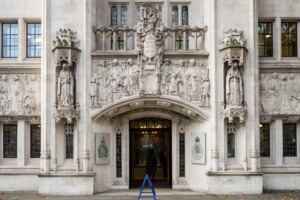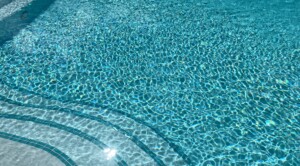Blackpool, famed for its amusement park , amusement park rides and its long stretch of golden sand, first became a destination for those seeking fresh sea air in the 18c and, after the coming of the railway, for the workers of the industrial towns of the North West who were looking for fun as well.
The amusement park, known as Blackpool Pleasure Beach, was a comparatively late arrival, being preceded by piers and the promenade. It was the brainchild of Alderman George Bean, who had worked on Madison Avenue and had experience of the famous amusement park at Coney Island. In 1896, he bought a site of 42 acres on the sea front and aimed to build an American style amusement park "to inspire gaiety of a primarily innocent nature and to make adults feel like children again". In return for a guaranteed tram service to
the amusement park, he gave the esplanade to the town.
Alderman Bean died in 1929 and his son-in-law, Leonard Thompson, married to his daughter Doris, took over as managing director. Leonard was an Oxford graduate in natural sciences and no doubt was familiar with the gravitational forces that play such an important part in amusement park rides! He was a great friend of Walt Disney, who gave him a golden key to the Disneyland amusement park and he and his family made frequent use of it. When Walt died, the key was taken off him, much to his chagrin!
Leonard wished to bring architectural form and a unified design to the amusement park and in 1933 commissioned a redesign of the Casino [which was never used for gambling]. This contained a restaurant, bars and a small apartment for guests. This apartment remains virtually unchanged and is a gem of art deco style, with its burr walnut fitted furniture and cocktail bar.
The amusement park remained open during the Second World War – Leonard said that entertainment was about the only thing that wasn’t rationed – and after the war, business at the amusement park boomed as currency restrictions made holidaying abroad very difficult. 500 special trains brought holiday makers to Blackpool each weekend and a visit to the amusement park was a must for them.
Leonard died in 1976 and his son Geoffrey succeeded him as Managing Director, with Doris chairing the board of directors. These two enthusiastically tried out each new ride introduced into the amusement park,
with Doris still insisting on doing so in her late 90’s. She remembered her father making her buy tickets out of her pocket money at the amusement park when she was a girl and so no doubt appreciated her free rides!
Geoffrey went to Cambridge University and then took a degree in business administration at Pennsylvania University. Under his direction, the amusement park was consistently profitable and new spectacular rides were introduced, including Europe’s tallest rollercoaster, the Pepsi Max Big One, a spectacular introduction to the amusement park. The luxurious Big Blue Hotel, with 157 bedrooms, was added to the facilities of the amusement park in 2003.
In 2004, Geoffrey collapsed and died at his daughter Amanda’s wedding reception at the age of 67. Amanda was distraught but decided that the shows staged in the amusement park should go on as planned that night as her father would have wished. Nicknamed "Mr. Funshine", Geoffrey was greatly respected in Blackpool and was sadly missed.
Amanda has taken over as managing director of the amusement park, with her brother Nick as her deputy. She has smartened up the amusement park – with some of its fans regretting the loss of its slightly shabby charm – and has made it an attraction fit for the 21st century. It is still a family affair, with Fiona, Amanda’s sister and an architect, responsible for some of the buildings in the amusement park. Barbara Thompson, Geoffrey’s widow, arranges a free fun day for children each year, with particular emphasis on those with special needs and is respected for her charity work.
The amusement park employs 1, 200 people and has 6m visitors each year. Blackpool has been disappointed recently. Its bid to construct a super casino was not approved by the Government and so it is important that the Pleasure Beach, its world famous amusement park, continues to prosper. In 1922, it was described as the earthly paradise of a hard working and shrewd people. Let us hope that it will continue to be so under the care of the family who have looked after it for so long.
See also:
Tivoli Gardens Amusement Park : a Potted History
Amusement Parks: Disneyland – a Potted History
Amusement parks: Walt Disney World – a Potted History
Amusement Parks: Six Flags- a Potted History
Cedar Point Amusement Park: a Potted History
Amusement Parks: Tokyo Disney Resort – a Potted History
Amusement Parks: Hong Kong Disney Resort – a Potted History










